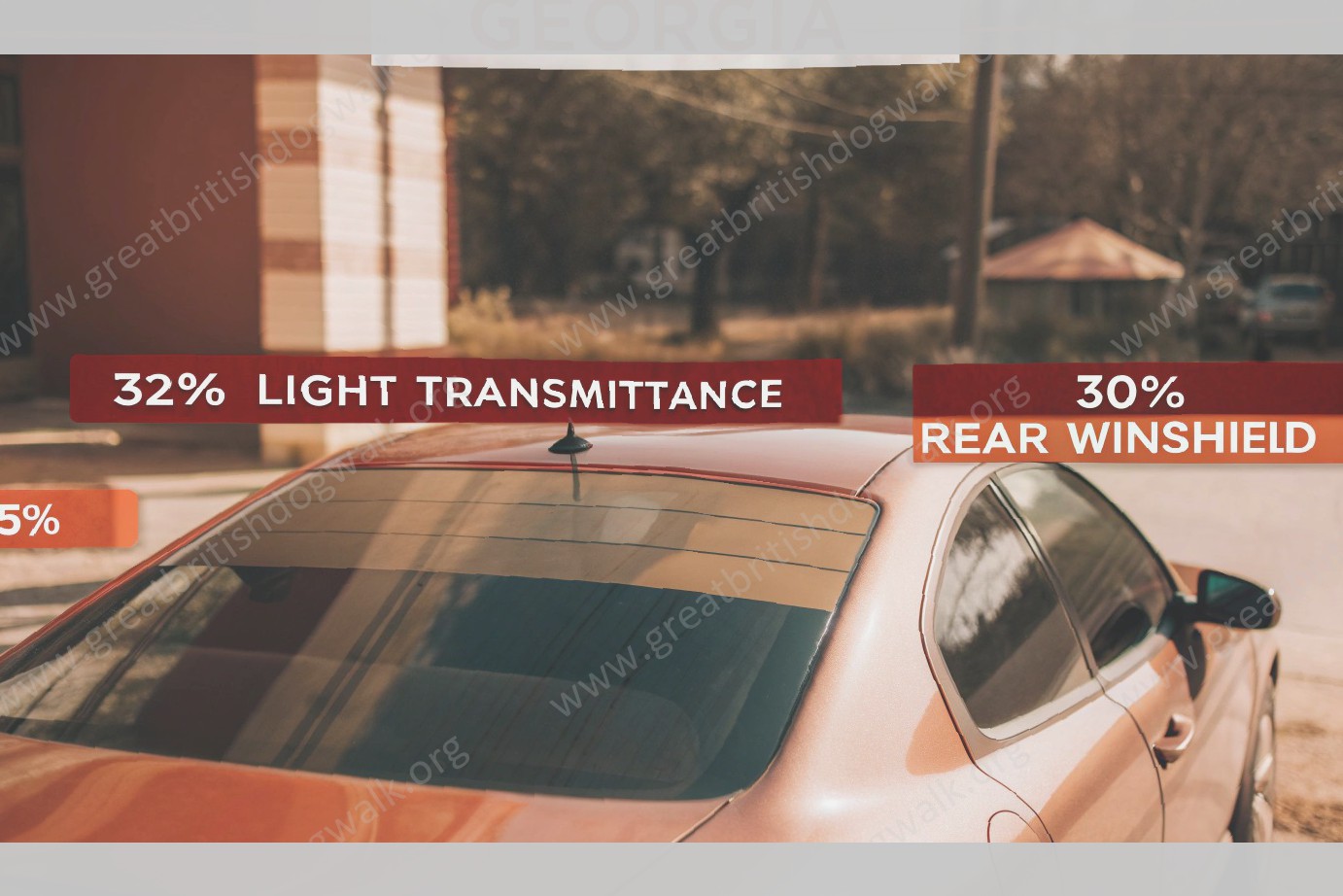All About Window Tinting Laws in Georgia
Window tinting laws are meant to promote the safety of drivers and passengers with tinted windows. They keep law enforcement officers safe too, by ensuring that they can see inside a vehicle when they approach it. By imposing legal limits on how much window tint a driver can use, lawmakers in Georgia and other states have attempted to balance their desire for safety with the desire of their constituents to retain some privacy and enjoy some relief from the sun’s heat and glare. Legal tint limits are not unique to the state of Georgia, but exactly what those limits are is. Just as every state, county and municipality has different rules and regulations regarding tint, so too do each state, county and municipality have different legal tint limits for heavy, medium and light tint. However, one thing is for certain — all states do limit the amount of tint a person can have on their windows, and that includes the state of Georgia. So why do states feel the need to impose these legal tint limits? As noted above, window tint affects visibility . That’s not necessarily a bad thing, as there are many benefits that come with having tinted windows, including protecting the interior of your vehicle from UV rays, lowering your heating costs or regulating the temperature inside a vehicle during the summer and allowing the vehicle’s occupants a greater level of privacy. These benefits do come at the expense of safety and law enforcement though, as dark tinted windows may make it difficult for law enforcement officers to see in the vehicle, and it can be more difficult to see your blind spot, thereby increasing the likelihood of accidents occurring. In the state of Georgia, the legal tint limits for the front windshield is 32% transmittance for the driver’s side and 34% for the passenger’s side, while the back windows must allow 30% transmittance and the rear windshield must allow 25% transmittance. The only windows that are exempt from these legal tint limits are those located above the AS-1 line, which goes from the center of the windshield and to approximately the top of the steering wheel. These windows may have an unlimited amount of tint applied to them.
What are the legal tint limit specifications in Georgia?
The following is a complete overview of the current legal tint limits in Georgia today:
Front Windshield
For the windshield of any passenger vehicle, truck, van, or multi-purpose vehicle, a clear or tinted transparent film may be used and must allow more than 32% of the light in.
On or after July 1, 2008, tint is not allowed on the windshield of a motor vehicle except in the area above the AS-1 or top three inches of the windshield immediately adjacent to the windshield’s uppermost edge.
Front Side Windows
For the front side windows of any passenger vehicle, truck, van, or multi-purpose vehicle, a clear or tinted transparent film may be used as long as it allows more than 32% VLT in.
Windows Behind Driver
For the side windows behind the driver of any passenger vehicle, truck, van, or multi-purpose vehicle, a clear or tinted transparent film may be used as long as it allows more than 32 % VLT in, and has a reflectivity of no more than 6%.
Rear Window
For any car or truck, either a colored and/or tinted transparent film may be used on the back side window and rear window. The transparency of the window must allow 32% or more of light transmission and have a reflectivity rating of no more than 6%.
Penalties & Legal Ramifications for Tinting Violations in Georgia
Georgia law is pretty permissive when it comes to tinted windows on a vehicle. Not only is there no permit requirement, you are not required to apply for anything prior to application, nor will the tint be required to pass inspection while registering your vehicle. Color does not even matter. Provided that you stay within the legal limits, you are fairly free to tint your windows as dark as you would like. The penalties for failing to meet the tint requirements are very light as well.
Failing to meet the tint limitations in Georgia is addressed in O.C.G.A. 40-8-79.2. The penalties for violating the law are not criminal: they are civil penalties and are not enforced by criminal law enforcement agencies. For all window violations, the Georgia Department of Revenue is tasked with enforcement.
The penalties vary by type of violation. In addition to a warning on the first violation, subsequent violations of the law are subject to civil penalties as follows (per section c.):
"(1) For a first violation, five dollars ($5.00) per window in excess of that which is permitted by Code Section 40-8-73;
- (2) For a second violation, twenty dollars ($20.00) per window in excess of that which is permitted by Code Section 40-8-73;
- (3) For a third violation, one hundred dollars ($100.00) per window in excess of that which is permitted by Code Section 40-8-73; and
- (4) For a fourth and subsequent violations, two hundred dollars ($200.00) per window in excess of that which is permitted by Code Section 40-8-73."
This statute could have been written better. A violation "in excess of that which is permitted" is not clear. Does this mean $5 per window? $20 per window? Or does it mean $5 for the second window, $20 for the third window, and so on, based on the severity of the violation? It is not clear from the statute, and the Department of Revenue does not clarify this in their recommended form for assessing penalties (click here; §42-1157). However, this appears to mean $5.00, or $20.00 for each window over the limit, not just $5.00 for the first and $20.00 for the second, and then $100 for the third and up. The total assessment would be adjusted downwards if the individual windows were tinted within the limit of the law.
An important exception in subsection (d) provides a defense to a charge of tinting violation (and avoid any penalty), if at the time the alleged tint was installed, the tint had been certified by an "approved entity." The approved entities are listed as laboratories or businesses "which have been approved by the American Association of State Highway and Transportation Officials or another nationally recognized laboratories or organization in the window film industry and whose approval criteria are grounded in sound science, research, or testing." As a matter of interpretation, this exception would seem to make "certified" tinting exempt from any assessment as being otherwise "permitted by Code Section 40-8-73".
How to Measure and Verify Your Window Tint in Georgia
To determine if your tint is legally acceptable in the state of Georgia, you will need a window tint meter, which are typically available for purchase or can sometimes be found at local tint shops. You can also simply take your vehicle to the local tint shop and have them check the tint for you. The Georgia Department of Public Safety has set the tint laws in Georgia, and if your tint meets their standards , either you or the tint shop can apply for the tinted windows certificate of approval.
In short, tinting must not be more than 32% on the front windows, windshield, or back windows. In terms of reflectivity, only reflective tint that has a rating no more than 20% is allowed. Any darker tint(which is still legal) is to be used only on the rear windows and rear side windows. The tint exemption statute also provides exceptions for individuals who have a sign from their doctor.
The Reason Why Georgia Watches Car Window Tint So Closely
Georgia regulates window tinting to ensure safety on the road and address enforcement concerns. From a safety perspective, tinted windows can limit visibility, especially in low-light conditions or when it’s raining. This lack of visibility can make it difficult for drivers and passengers to see outside their vehicles, potentially leading to accidents and injuries. For first responders and law enforcement officers, this means increased chances of not seeing pedestrians or other vehicles in their blind spots, especially after dark.
From an enforcement standpoint, if window tint is too dark or reflective, officers cannot see if the driver or any passengers are wearing seatbelts, are holding a cellphone, or are otherwise driving distracted. In addition, it can make it difficult to detect any illegal activity, making law enforcement officers less confident in stopping a vehicle to investigate any suspicious activity if they cannot see who is inside.
Window tint reduces heat and glare, which can be beneficial for drivers by reducing eye strain and improving comfort while driving. However, there has been debate about the amount of tint that should be allowed on car windows. This is where Georgia state law comes in, setting specific regulations for window tint for safety reasons.
In addition to increasing visibility, Georgia regulations also address the need for law enforcement personnel to easily identify the make, model, and color of a vehicle. Color can be especially important for identification purposes during nighttime traffic stops and in situations where an officer has to pursue a driver.
State law sets specific guidelines on how dark or reflective window tint can be for vehicles operating on Georgia roads. While these regulations may seem strict, they are in place to protect the officers enforcing the law and the general public. Lawmakers and law enforcement officers in Georgia are continuously reviewing these regulations to ensure that they meet the needs of those who use the roadways.
Tint Law FAQ for Georgia Vehicle Owners
Q: Are there any exemptions for state residents? For example, what if I just moved here from California and need to have dark tint for medical reasons?
A: Currently, there are no exemptions in Georgia window tint law for out-of-state citizens. You must adhere to all Georgia tint rules in this case.
Q: Does Georgia recognize window tint laws of other states?
A: No. Georgia tint laws are stricter than those of many other states, and you must follow Georgia law at all times when driving a vehicle registered in Georgia.
Q: What do I do if I moved to Georgia from another state with more lenient tint laws? Do I have to change my window tint to comply with Georgia law?
A: Yes. If you are moving to Georgia , you must have your vehicle’s window tint inspected to ensure that it meets Georgia tint regulations.
Q: Does Georgia tint law apply to windshield tint?
A: Yes, Georgia tint law applies to windshield tint as well as all other window tint on your vehicle.
Q: Is there a cost for Georgia tint inspection?
A: Georgia tint inspection is performed free of charge by law enforcement.
Q: Is Georgia tint inspection performed only by law enforcement, or can other qualified professionals perform the inspection?
A: Currently, tint inspection is only performed by law enforcement in Georgia.



